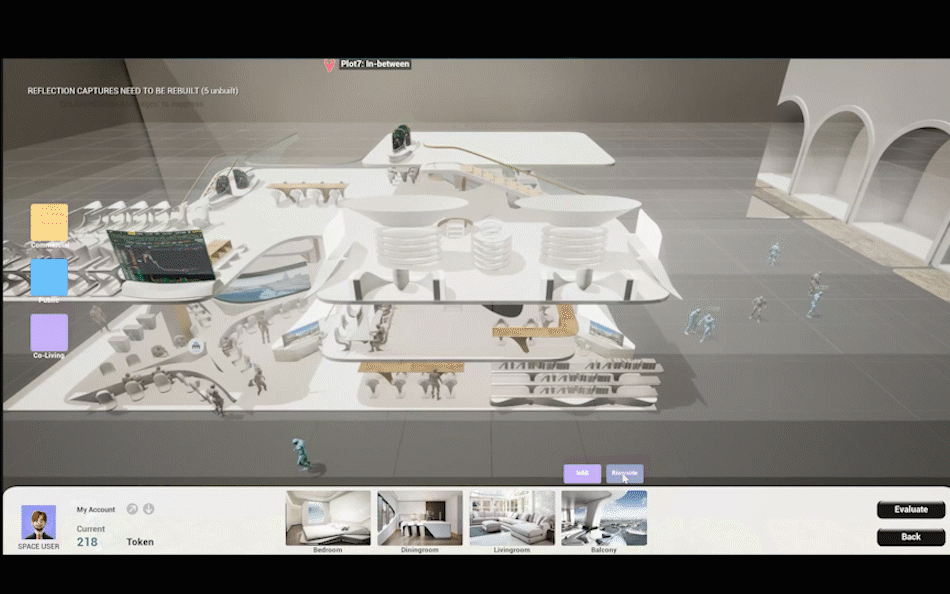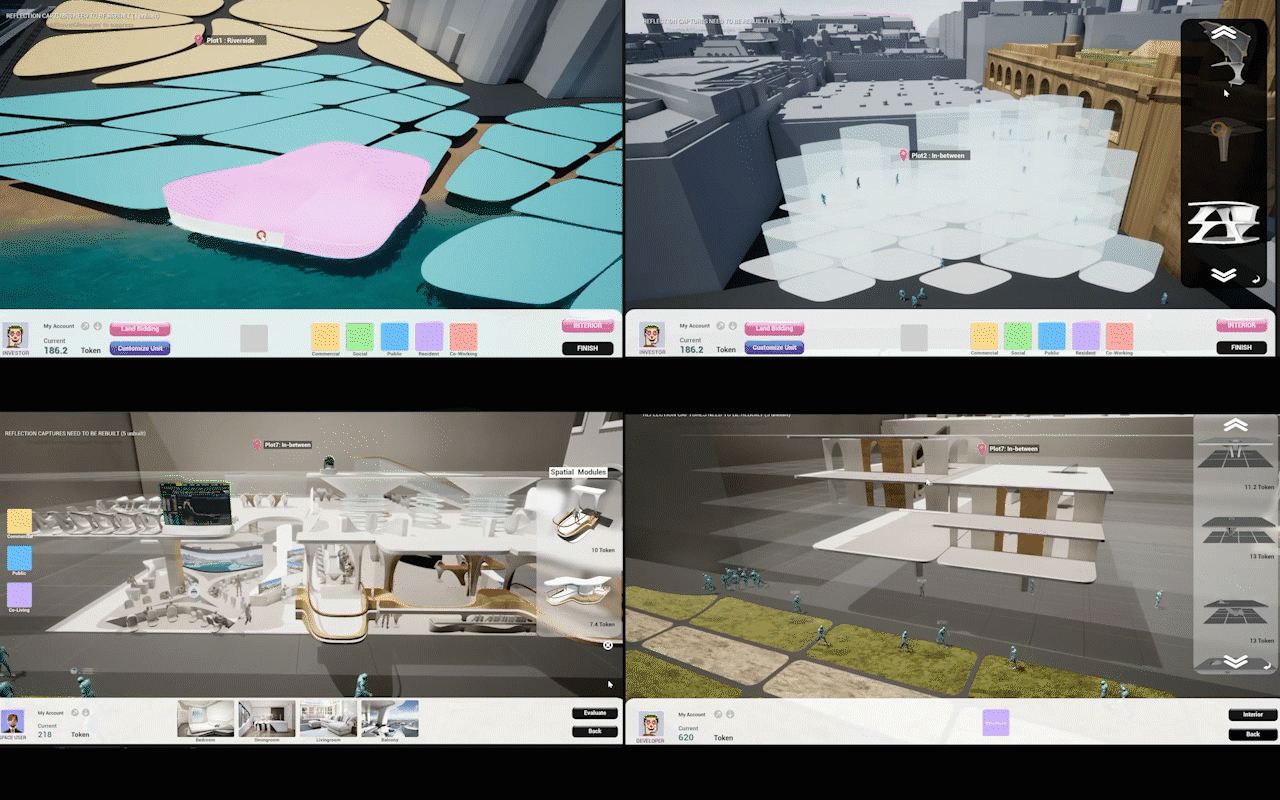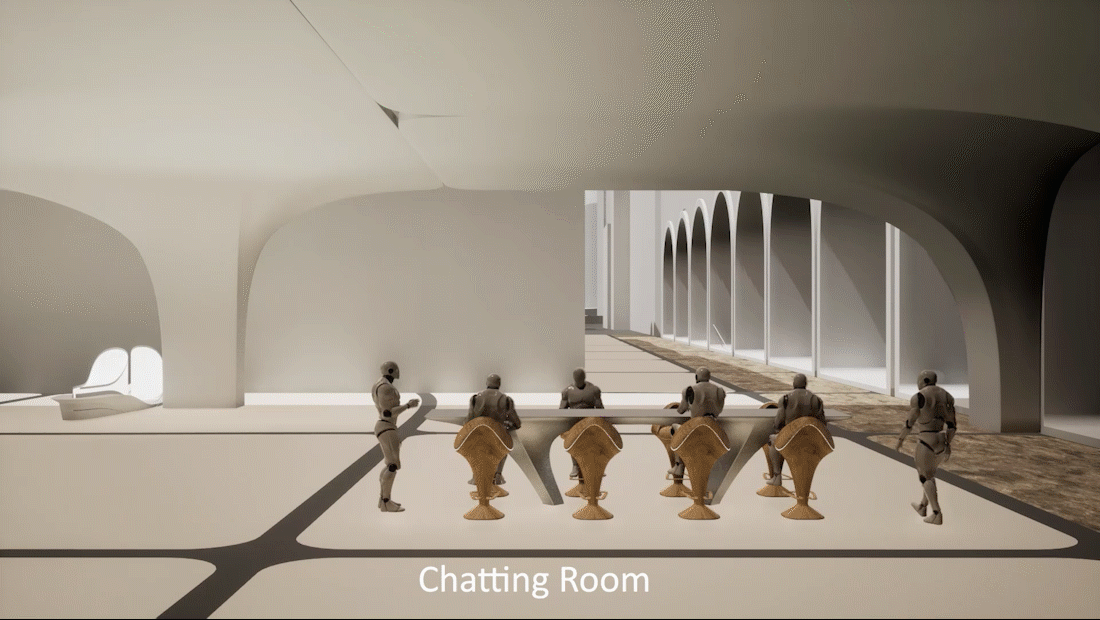Infill-DenCity
Studio Shajay Bhooshan
Tutors Ariadna Lopez, Leo Bieling
Team Huining Zheng, Qizheng Zhang, Suman Sharma, Yiyu Xiong
Is London’s central mile at the peak of its usability, or is that an illusion? Recent data shows that the city of London hosts the jobs of over 400,000 people while only 9,000 reside in it. Further to this, the number of inhabitants in this part of the city has halved since Victorian times. Not only does the Central Mile have scope for growth, but there is also a significant percentage of unoccupied residential properties. Despite these reasons, there is negligible land to construct upon, with even the most minute sliver in the central mile serving a purpose.
Infill-DenCity, by virtue of infill development, explores the possibility of building upon and amongst the existing built environment. This is facilitated by incorporating governance technologies, designed to allow real-time, collaborative negotiations between developers and end-users via a game interface. This saves considerable amount of time compared to existing procedures, wherein approvals can take up to 26 weeks and even longer. The use of Gov-Tech helps achieve a transparent funding and decision-making process before reaching a consensus to material construction.
The use of spatial technologies allows for highly customizable and user-friendly spatial modules, which help users configure and customize spaces according to their needs. The production of the spatial modules is made possible with aid of advanced technology such as robotic hot wire cutting, enabling fast-paced, repeatable production of curved volumes. The resulting positive and negative fragments can be externally reinforced or used as moulds to cast in, respectively. Importantly, this results in a modular and reconfigurable kit-of-parts with net zero material wastage.
Infill-DenCity aims to create a prototypical Citizen Centric City orchestrated by the active participation of its end users, residents and other stakeholders, while diminishing the gap between residential and commercial density.









